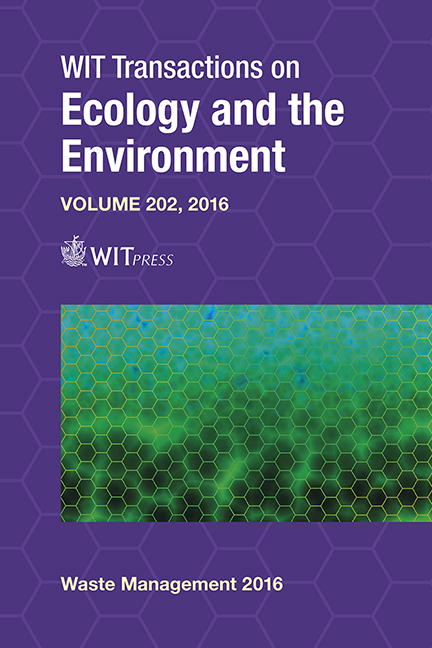Waste Minimization Practices At The National University Of Costa Rica
Price
Free (open access)
Transaction
Volume
202
Pages
12
Page Range
231 - 242
Published
2016
Size
1,342 kb
Paper DOI
10.2495/WM160211
Copyright
WIT Press
Author(s)
J. Mora, J. Sibaja, J. Rodríguez, C. Salas
Abstract
Hazardous materials are substances that are flammable, corrosive, reactive, toxic, radioactive, poisonous, carcinogenic, or infectious. According to the USEPA (United State Environmental Protection Agency), waste is considered hazardous if it has one or more of USEPA’s four hazardous characteristics: flammability, corrosivity, reactivity or toxicity. One important source of chemical waste is higher education facilities such universities, where the chemical waste generated in the laboratories (labs) present at least one of the hazardous characteristics listed by USEPA. In order to determine the quantity of laboratories doing waste minimization practice related with the USEPA pollution hierarchy, an initial diagnostic about waste management at laboratories was conducted. The data gathered were used to start a training to laboratory personnel training about EPA-PH (Environmental Protection Agency-Pollution Hierarchy). After training, new diagnostics were performed. The applications of waste minimization practices in the labs were analyzed before and after the training. The most poorly practices performed year by year during the study period were “substitute nonhazardous materials”, “chemical treatment” and “distillation”. “Redistribute surplus chemical” was performed in 22 labs, 30 labs and 48 labs during the years 2010, 2011 and 2013 respectively as the most common practice. This study showed that training about pollution prevention hierarchy increased the number of labs doing waste minimization practices, prioritizing reduction and prevention from the source. Future research is recommended to define the chemical waste rate generation before and after training as a quantitative indicator of the impact of training sessions upon the overall institutional chemical waste prevention program.
Keywords
hazardous materials, chemical waste management, pollution hierarchy, waste reduction and prevention, laboratories, universities, Costa Rica





